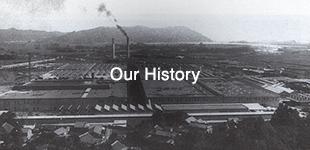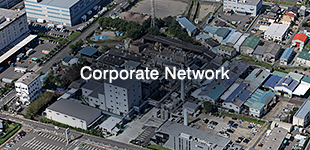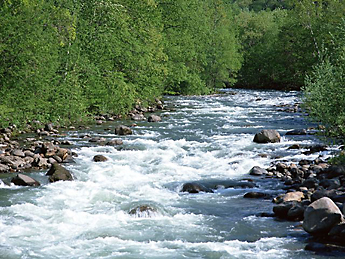
Deteriorating river water quality caused by sanitary effluent has put our water in danger. We need to protect water, which is a precious resource and the source of life.
Our Soless is contributing to the revitalization of water in the city of Tanba in Hyogo Prefecture.
Surplus Sludge Reduction System "Soless"
With the spread of sewerage, surplus sludge has increased
On November 1, 2004, six towns in Hikami County merged to create the new city of Tanba, located in the central eastern part of Hyogo Prefecture. The meridian (135 degrees east longitude) runs north to south through the western part of the city and is known to have the lowest central watershed in Japan. It is positioned in the mountains just at the midpoint between the Seto Inland Sea and the Sea of Japan. With the extreme daytime and nighttime temperature difference year-round, its "Tanba Fog" has become famous, forming throughout autumn and winter. While the pollution and deteriorating water quality in rivers and agricultural irrigation canals (due to sanitary effluents) has become a major social problem, now a new problem has emerged: how best to dispose of the sludge created by wastewater treatment. The former town of Kasuga in Tanba has been grappling with the cost of treating the excess sludge. Our Soless was adopted for use in the so-called "Community Plant" (human waste treatment facility) and made a major contribution to the reduction in sludge. We applied its engineering technologies to environmental concerns, developing and manufacturing water treatment equipment.
None Other than Microorganisms
In general, sanitary effluents are treated with something called "activated sludge". Microorganisms, not chemicals, are employed in the sewage treatment process. Microorganisms from bacteria, protozoa and the like combine with organic materials that are the source of the pollution, forming "activated sludge". By combining the microorganism-rich "activated sludge" with sewage and aerating the mixture, the microorganisms feed on the pollutants (the organic materials) and multiply. As the microorganisms feed on the pollutants, their mass increases, sinks, and forms sedimentation. The remaining clean water above is then disinfected and released back into the river. Microorganisms that sink to the bottom of the treatment tank after feeding on the pollutants are normally dealt with at disposal facilities as excess sludge. "Soless" is a device that controls the volume of surplus sludge.
Major Contribution to the Reduction in Excess Sludge
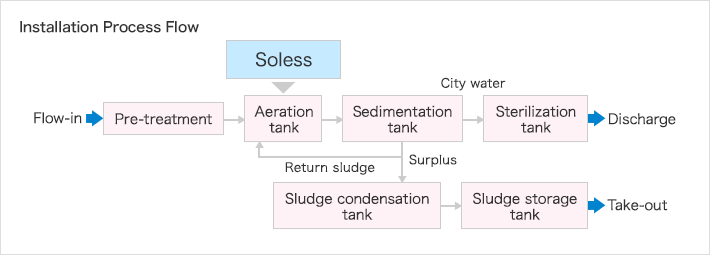
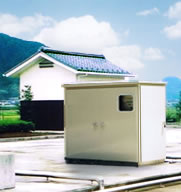
Soless, a device that reduces the amount of surplus sludge
"Soless" is a synthesized word combining "soil" and "less". As the name suggests, it is a device that reduces the amount of surplus sludge. Although there are various methods of treating wastewater, Soless is installed as part of a treatment system called the contact aeration method. Treatment tanks containing polyphenol, well-known in red wines, promote self-oxidation (self-digestion) and cut down on excess sludge. The greatest advantage of Soless is that it can reduce the amount of sludge without adversely impacting water quality. In addition, it is compact, can be used in small-scale facilities, and is easy to install. Also in its favor is its low operating cost and ease of maintenance. This product had been developed as a new Engineering Administration business; we are in charge of the entire process, from system design to manufacturing.
Customer Opinions
In Tanba, where Soless made its debut, they have succeeded in reducing sludge by 40 percent. The plant administrator has commented, "Wastewater treatment is stable and easy to manage." Positive reviews were also received for the results achieved by using Soless in their community plant. It has also been installed in their farming village wastewater treatment plant. We will be proposing that Soless be adopted for use in farming village wastewater treatment plants, public sewage treatment plants, and food factory wastewater treatment plants that use the airborne method. In addition, we will develop new engineering products that continue to contribute to the environmental preservation of rivers.
Applications and Uses

Surplus Sludge
Reduction System
"Soless"
Other Application Examples







